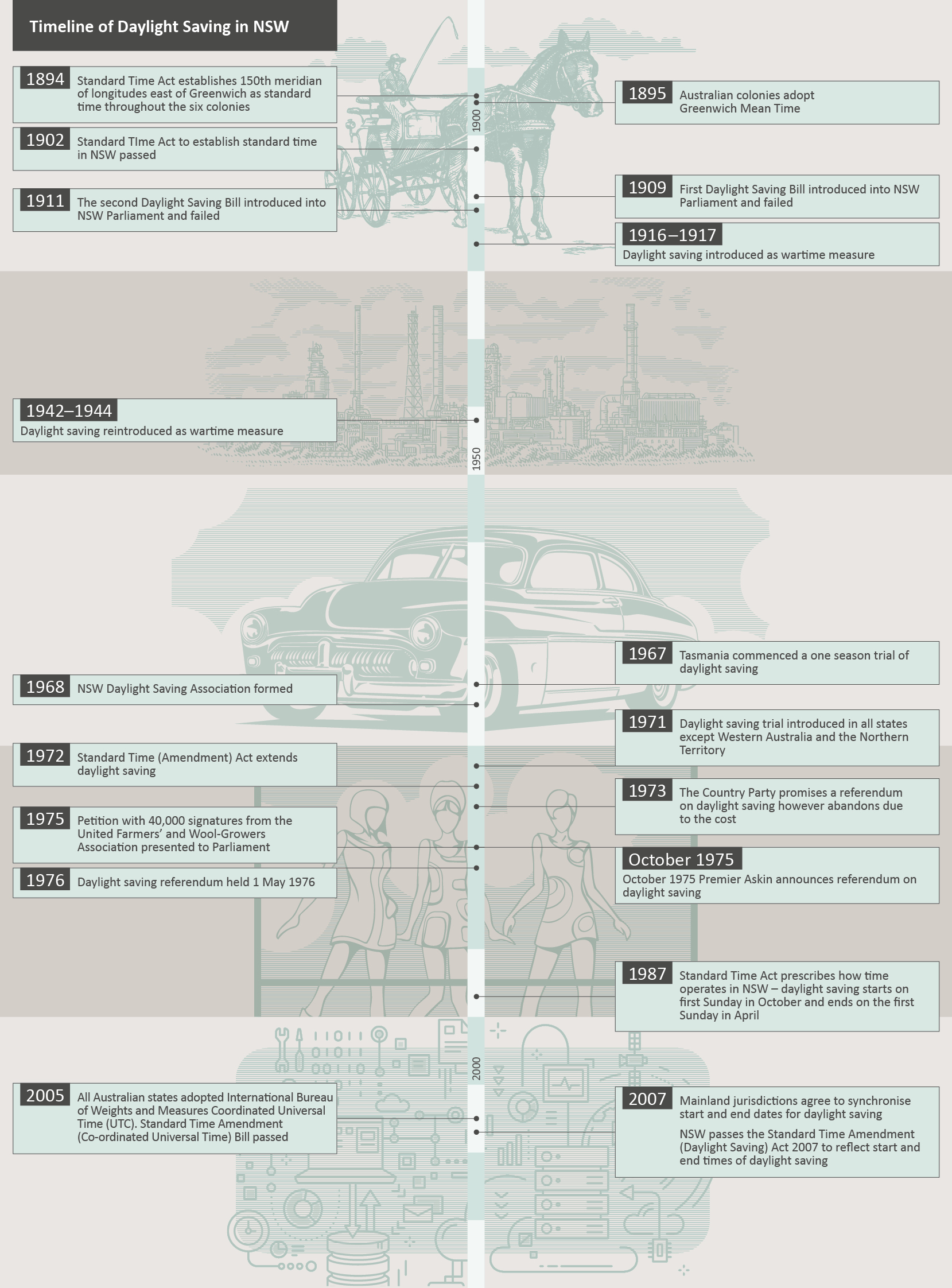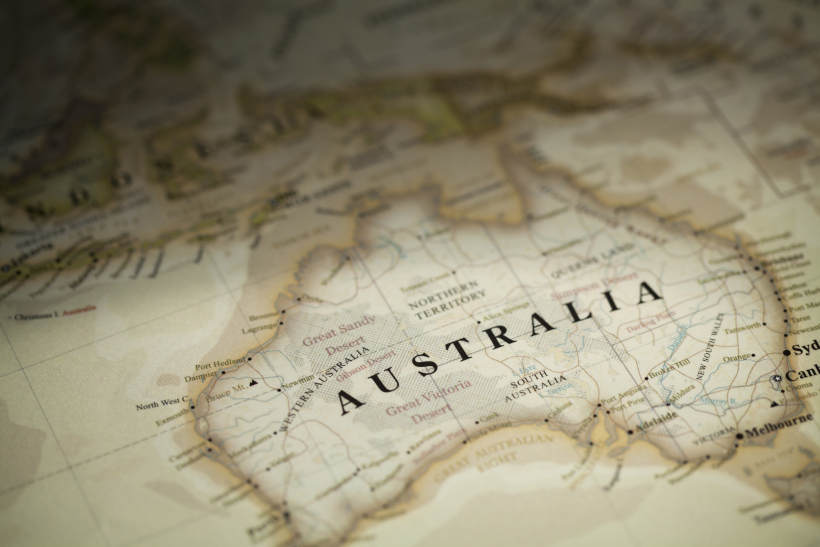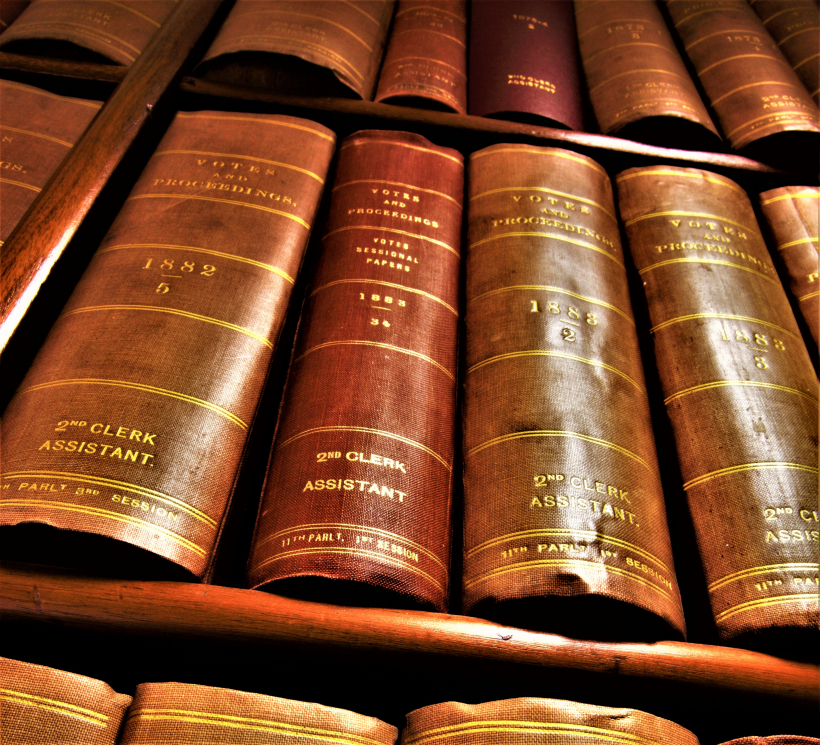What Will I Learn
- The following information and activities will help you to understand what referenda are.
- The case study on daylight saving will give you a practical example of how referenda can be used to change the law.
Referenda
Key Points
- A referendum is a vote by the entire electorate on a single political question which has been referred to them by the government
- There are national and state referendums
- A referendum is usually worded so that it can be answered by a Yes or No answer.
National referenda are conducted by the Australian Parliament to approve
- Parliament – proposed changes to the Constitution.
Since Federation (1901) there have been 44 federal referenda to change the Australian Constitution. Only 8 have been approved by the Australian people.
State referenda may be held to
- find out what voters think on an issue
- to approve proposed changes to the New South Wales Constitution
- to resolve a deadlock between the two Houses of Parliament in relation to the passing of a bill
There have been 16 referenda in NSW since 1900 and only four have not been approved.
Case Study - Daylight Saving in NSW
Origins of Daylight Saving
In 1895 George Hudson, a New Zealand entomologist, came up with the idea that if he had an extra two hours of daylight in summer, it would give him more time to go bug hunting.
What is daylight saving?
- Daylight saving is the process where the local time is changed one hour forward or backward.
- The change happens twice a year and as a general rule, every first Sunday in October the time moves forward one hour.
- The reverse happens every first Sunday in April when the clocks are turned back an hour.
- Daylight saving is observed by over 40% of the world.
Time zones in Australia
Australia has 3 time zones in winter and 5 time zones in summer:
Australian wintertime zones
| Zone | Coverage |
| Australian Eastern Standard Time (AEST) | New South Wales, Queensland, Victoria, Tasmania and the Australian Capital Territory |
| Australian Central Standard Time (ACST) | South Australia, the town of Broken Hill in western New South Wales and the Northern Territory |
| Australian Western Standard Time (AWST) | Western Australia |
Australian summertime zones
| Zone | Coverage |
| Australian Eastern Standard Time (AEST) | Queensland |
| Australian Eastern Daylight Time (AEST) | New South Wales (except Broken Hill), Victoria, Tasmania and the Australian Capital Territory |
| Australian Central Standard Time (ACST) | Northern Territory |
| Australian Central Daylight Time (ACDT) | South Australia and the town of Broken Hill in western New South Wales |
| Australian Western Standard Time (AWST) | Western Australia |
The different time zones in summer happen because the responsibility for setting time zones has remained with the state and territory authorities.
History of daylight saving in NSW
Did You Know?
Before 1890 each local town or city in Australia could set its own time, which was called local mean time. How confusing would that be?
Watch
Hear from the NSW Attorney General, the Minister in charge of this annual time change, on how this process became permanent in NSW.
Standardisation of time began in 1895 when the six colonies adopted Greenwich Mean Time (GMT) as the basis for standard time. In NSW there were three daylight saving bills introduced to Parliament in 1909, 1911 and 1916 however they were all defeated.
The war years
During the First World War the Australian government introduced daylight saving to save fuel and light just like Germany and Great Britain did. There were many complaints from rural and regional people so the government stopped it in 1917.
Again in 1941, during the Second World War, the Australian government introduced daylight saving but once again, due to criticism from regional and rural Australia, the government stopped it in 1944.
Daylight saving trials
In 1971 NSW, Victoria, Queensland, Tasmania and the Australian Capital Territory each began a trial of daylight saving. In NSW community support was strong for daylight saving in 1972, and even though there was still opposition from the rural sector the government extended the trial.
By 1973, there were many groups opposed to daylight saving including the Daylight Saving Association, the film distributors and cinema association and the United Farmers’ and Wool-Growers Association. The United Farmers’ and Wool-Growers presented a petition to Parliament with 40,000 signatures opposing daylight saving. The NSW Premier decided that a referendum would be held at the same time as the state election in 1976 to decide if daylight saving would continue or not.
The ballot paper stated At present there is a period commonly called ‘daylight saving’ by which time is advanced by one hour for the period commencing on the last Sunday in October in each year and ending on the first Sunday in March in the following year. Electors were asked to answer ‘yes’ or ‘no’ to the question “are you in favour of daylight saving?”
Referendum Results
Over 68% of voters supported daylight saving and 31% did not. 1,882,770 electors were in favour; 868,900 were against and 35,507 votes were informal.





